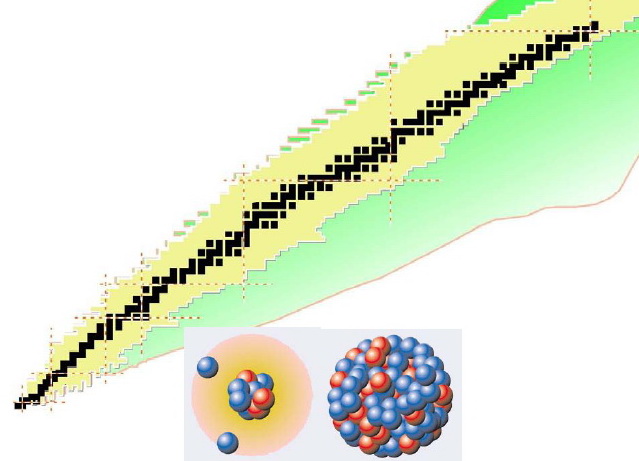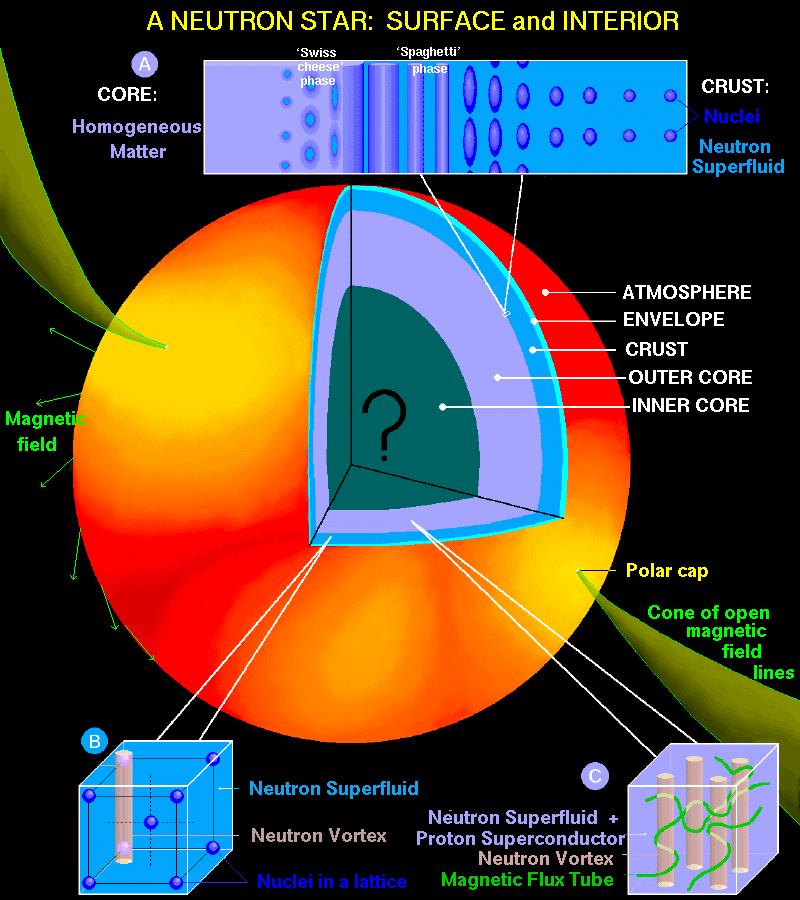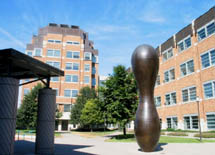
INSTITUTE FOR NUCLEAR THEORY
News
Home | Contact | Search | News archive | Site Map

|
INSTITUTE FOR NUCLEAR THEORY News
Home | Contact | Search | News archive | Site Map |
|||||
Interfaces between Structure and Reactions for Rare Isotopes and Nuclear Astrophysics
The goal of this INT
Program was to identify those problems in the area of
theory for reactions with rare isotopes that need to be
solved in order to plan experiments for FRIB (the
Facility for Rare Isotopes) and in order to understand
the experimental results in terms of nuclear structure
and applications to nuclear astrophysics. The program
brought together reaction and structure theorists who
worked together to identify specific needs of reaction
theory and propose paths for their solutions and
implementation. The Program was
preceded by the 7th ANL/JINA/MSU annual FRIB workshop on
"Interfaces between Nuclear Reactions and Structure"
which was held from August 8-12, 2011 [Organizers B. A.
Brown (Chair), P. Danielewicz, G. F. Bertsch]. The
talk-intensive workshop had a large input from
experimentalists, who were encouraged to formulate
charges and challenges to nuclear structure and reaction
theory that could both influence and benefit
experimental nuclear physics research programs. The
experimental talks included the topics of one-nucleon
transfer and knockout reactions; two-particle transfer,
two-particle knockout and two-particle decay;
charge-exchange reactions and their connections to
nuclear astrophysics; and medium to high energy
heavy-ion reactions. Discussions included: What is the
role of nuclear correlations on the one-particle
transfer form factors. What is the role of pairing (T=1)
and proton-neutron (T=0) correlations on reaction and
structure observables? What constraints can be put on
the nuclear equations of state? What improvement are
required for the reaction theory codes that are used to
interpret the data? The pictures below give some
examples from the talks of Wilton Catford and Remco
Zegers on the new detector systems being used. The
Program consisted of seminars, group discussions and
many one-on-one interactions. Group discussions included
the topics of (1) making computer codes available to the
practitioners, (2) the validity of the eikonal
approximation, (3) the problems of center-of-mass motion
in nuclear structure and reactions, (4) the nature of
the Hoyle state in 12C, (5) time-dependent reaction
models and (6) fusion models. The
talks focusing on reactions included the topics of
coupled channels CDCC methods for light-ion reactions,
coupled channels methods for sub-barrier fusion, models
for radiative capture and Coulomb excitation for nuclei
near the drip lines, time-dependent Hartree-Fock methods
for heavy-ion fusion, applications of the dispersive
optical model for one-nucleon overlap functions, and
transport and quantum hydrodynamics models for
intermediate energy reactions.
(INT Workshop August 8 - September 2, 2011)
Reported by B. A. Brown (chair), H. Esbensen, P. Danielewicz and J.A. Tostevin
Date posted November 9, 2011
![]()

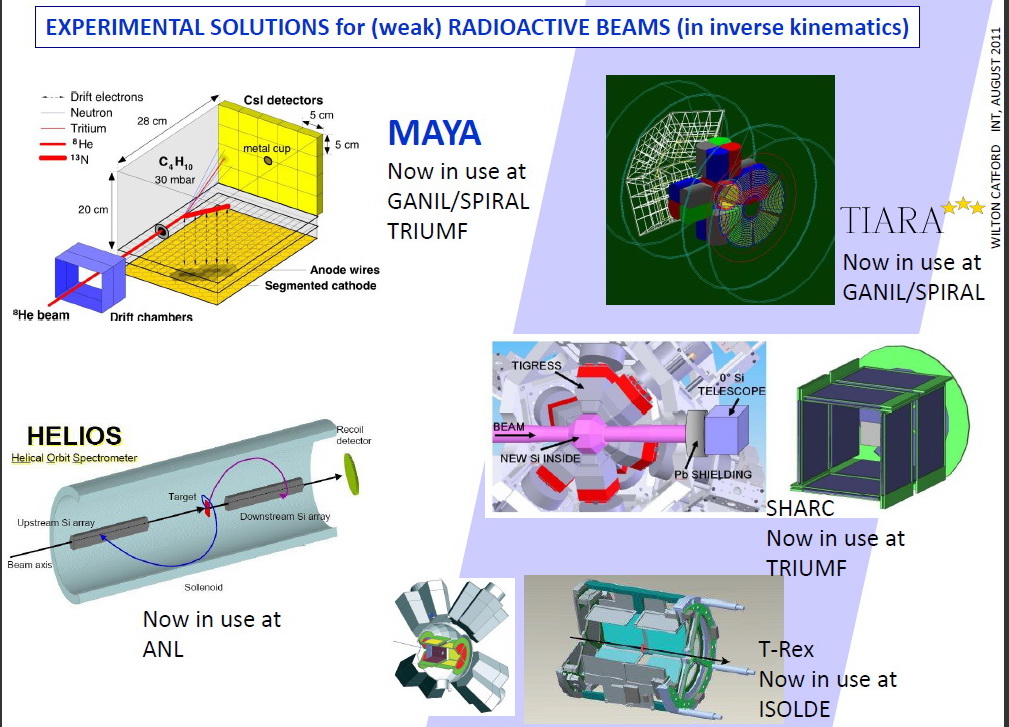
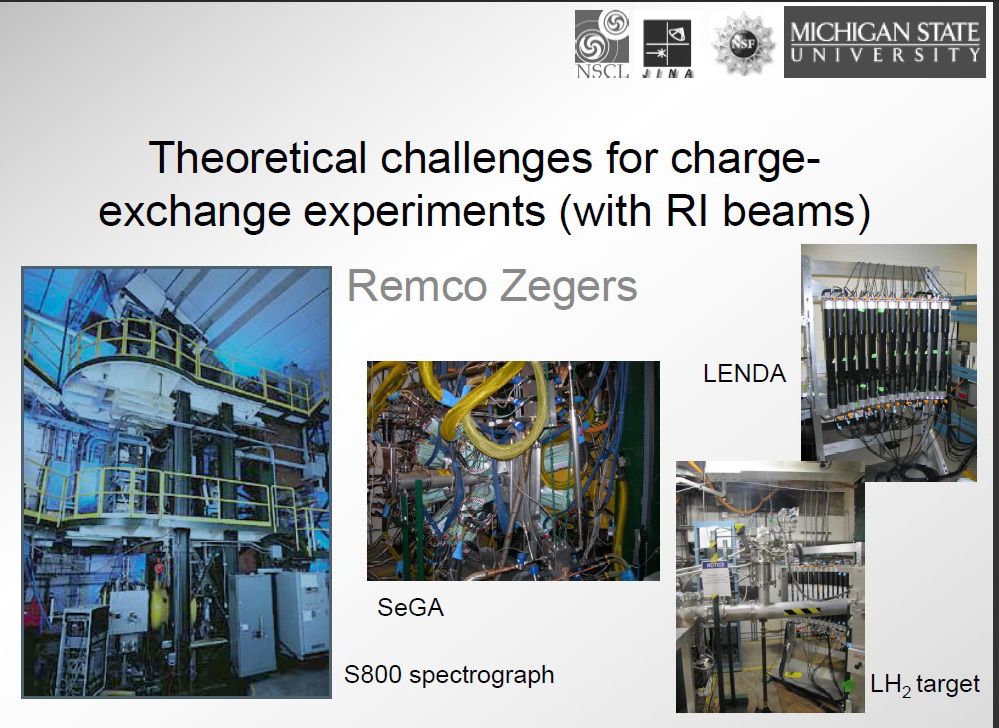

Theoretical talks were spread over the Workshop and the
Program. The talks focusing on nuclear structure
included the topics of ab-initio theory for light
nuclei, many-body methods that include the continuum,
the dependence of the overlap functions on the energy
scale of the theory, mean-field models including T=1
pairing for the nuclear ground state, time-dependent
mean-field approaches for nuclear excited states. The
pictures below give some examples from the talks of Petr
Navratil and Gaute Hagen on the theoretical formulations
being used.


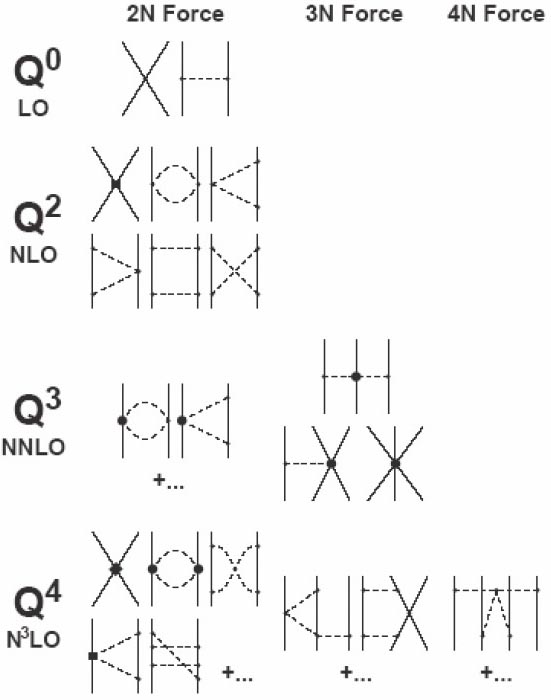

As an outcome of the Program, the organizers and
participants have contributed to a white-paper that
outlines in detail the specific needs for improvements
in reaction theory and related reaction theory computer
codes. The participants also agreed to support a website
where the commonly used computer codes and documentation
could be accessed by the theoretical and experimental
practitioners.
The Workshop and Program were successful in illuminating
the theoretical problems that need to be solved for
understanding the rich nuclear landscape from stable to
neutron-rich nuclei (below left), and their implications
for nuclear astrophysics such as the properties of
neutron stars (below right).

.